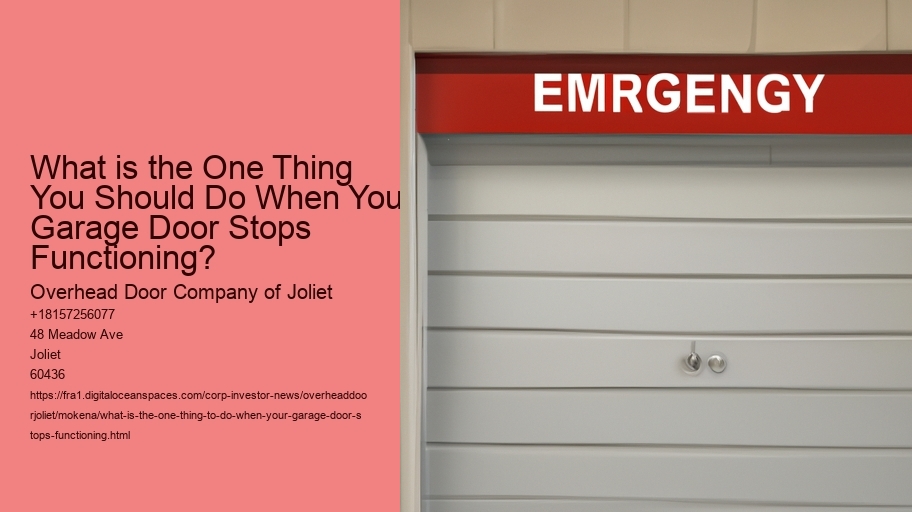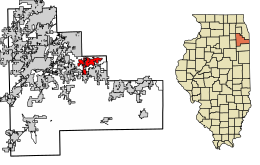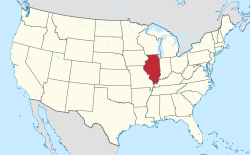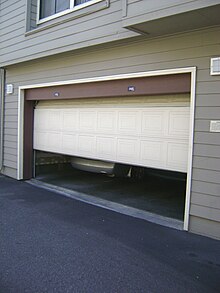What Kind of Garage Door Opener and Door Do You Have? .
If garage doors stop functioning, it could be an unsettling and unpleasant experience.Whether you are rushing out for work, or trying to pull your car in garage during a downpour and the door stops working, it's the last thing you'd like to face with.The first step to address the issue is to determine the type of opener and garage door you have as it will greatly affect the way you approach solving the problem and fixing.
Garage doors generally fall into several categories based on their style and operation.The most frequent kinds are roll-up, sectional, and tilt-up doors.Sectional doors are made of panels joined by hinges, allowing the door to open and close by bending as it is closed and opened on an upright track.Roll-up doors, typically seen in commercial spaces, are constructed from panels that fold up into a coil.
The tilt-up door, on contrary is a solid single piece that opens by tilting outward and upwards. Belt drive garage door openers are quieter but they use an elastic band instead of a chain. They're a good option for garages that are attached. Garage door openers with screw-drive utilize a threaded rod of steel for moving the garage door.
What is the one thing to do when your Garage Door Stops Functioning? - Governor of Illinois
- Chicago Loop
- torsion spring
- The Home Depot
The next thing to do is to examine the garage door opener to identify the model. Check the breaker and plug to make sure that the opener has power. Examine the release cord for manual operation to make sure it's not been pulled. This will cause the door to become disconnected from the opener. Examine the tracks and rollers of the door for damage or obstructions. Remove any obstructions.
Lubricate moving components if needed because a lack of lubrication can lead to jamming or sticking.If the door is still unable to function, try resetting the opener.This will often fix electronic malfunctions or faults.Consult the manual for your opener to find specific reset instructions, as this procedure can differ among models.Many modern openers feature reset buttons, however others might require unplugging before plugging it back in.
In some cases, the issue might be more complicated for instance, a damaged spring or a worn-out motor which will require expert assistance.Springs are subject to significant tension and could be hazardous to repair without the proper tools and expertise.
If the garage door stops functioning then you need to speak with a professional.
Examine for debris or obstructions.
When your garage door suddenly stops functioning, it can be extremely frustrating and confusing particularly if it's part of your daily routine.
This simple, but efficient step can be used to pinpoint the issue and return the functionality of your garage.Garage doors run by a set consisting of rollers, tracks and other moving parts that need to be clear of any obstructions in order to operate smoothly.Over time, dirt, leaves, tiny rocks, or any other debris can accumulate on the tracks or be trapped in the rollers.Even small obstacles can prevent the door from opening or closing properly.Therefore, a thorough inspection of these parts is the first thing you do.
Start by looking at the tracks, both on the left and right sides of the door. Find obvious obstructions or build-up. If you notice anything strange, like an acorn, or a rock that is stuck in the track. Remove it with care.
There are times when the problem may not be immediately visible, so it's advisable to run your hand along the track in order to feel for any unnoticed obstacles.Ensure that the tracks are properly aligned and also, since misalignment can also cause the door to be jammed.Also, inspect the rollers and hinges. The parts are supposed to be moving without any resistance. If they are stuck or sticky, it could be due to rust or grime. Lubricating and cleaning these components will often resolve the issue.
Check the area surrounding the door. Sometimes items in the garage can slide or move, making it difficult for the door to move. Check that the garage area is clear of obstructions and that there are any objects that could hinder the door.
If, despite clearing any visible obstructions, the door is still not working you should think about checking the sensors.
The sensors in modern garage doors may fail when they're dirty, or aren't aligned correctly.In the end, when you're confronted with an garage door that suddenly stops working, checking for debris or obstructions is a logical and often useful first step.It will require only a few tools and expertise, yet it can save your time, money, and the hassle of contacting a professional for what may be a quick fix.By making sure you have a clear pathway and
Examine the wall switch and remote control
If the garage door stops working, it can be an unintentional inconvenience that interrupts your regular routine.In such situations it's normal to feel the need to get the problem fixed quickly.One of the initial and most efficient actions you should consider is to check the remote control as well as the wall switch.
The inspection of these components can help you save time and avoid costly errors.First, consider the remote control.This handheld device is your primary tool for operating the garage door without direct physical interaction.Over time, remote controls can experience issues such as drained batteries, signal interference, or even internal damage.Start by replacing the batteries with new ones.It might seem simple, but dead batteries are a common reason for a garage door not responding.If the problem persists after replacing the batteries, try reprogramming the remote according to the manufacturer's instructions.Additionally, ensure that the remote is within the recommended range and that there are no obstructions blocking the signal.
The wall switch is a critical component of the garage door system.
The wall switch is directly linked to the garage door opener, and generally provides a more reliable means of operation.Inspect the switch for any signs of physical damage, or wear.Sometimes loose wires, or connections that aren't working properly can cause the switch to malfunction.If you feel comfortable doing it, then carefully open the switch's panel and look for damaged or broken wires.If there are any issues it is possible to call an electrician who is licensed to address the problem.In certain instances, the the wall switch may be in working order, yet the door remains unresponsive.This could suggest an issue in the garage door opener unit or any other component, such as sensors or door tracks.However, starting by utilizing the wall switch and remote control would be a sensible first step.
It is possible to eliminate these issues before moving on to more complex troubleshooting. This initial inspection will reduce time and provide assurance that you've done the right thing to determine the cause of your issue.
What is the one thing to do when your Garage Door Stops Functioning? - environmental factor
- Governor of Illinois
- United States of America
- environmental factor
Manually test the Door Balance
When your garage door suddenly stops working it could be difficult and inconvenient.The garage door is an an integral part of your house, offering security, protection from the elements, and a simple access to your vehicle as well as storage area.
Manually testing the balance of the garage door can be the most important thing to do in the event that your door is not functioning properly. This simple but powerful method can help you identify any issues that could be causing it and help prevent the possibility of further damage.The equilibrium of a garage door is critical to its efficient functioning.A properly balanced door makes sure that the opener won't have to work harder than is necessary, which reduces the risk of wear and tear on the motor as well as other parts.An overbalanced door on the other hand could lead to more significant problems over time, for instance, misalignment or broken springs, or even an entire system failure.Therefore conducting a test of the door's balance is an important diagnostic step that can help you determine whether there is a problem with the door or the opener mechanism.
Start by disengaging the garage door opener.
The majority of garage doors come with a release mechanism that is located on the handle or red cord. Once the door has been disconnected from the motor, lift it up to waist height and let it go. A properly balanced door will stay at a steady level, or move slowly.If you discover that the door is not balanced it is essential to take care of the issue promptly.Door balance issues are usually related to tension in the springs. It could be risky to adjust by yourself because of the tension they are under.It is advisable to seek assistance from a professional for adjusting the springs to ensure that the door is properly balanced correctly.Doing this will not only solve the immediate issue, but also will increase the longevity and stability of your garage door's mechanism.
In conclusion, manually checking the door's balance is a crucial first step if your garage door suddenly stops working.
If you address issues promptly and understanding the importance in addressing the issue, you can make sure that your garage door will function smoothly and safely in the future.Examine the Tracks and Rollers
This easy check can make it easier to save time and money when your garage door is not functioning.
Rollers and tracks are crucial elements of your garage door's operating system.The tracks are the metal rails that direct the door as it opens and closes. The rollers are tiny wheels that move along these tracks.
These parts can be worn out, dirty or even misaligned with time. This can lead to operational problems.Start by inspecting the track for obstructions. Dirt, grime, and even small particles could build up, making rollers struggle to travel across the track. Cleaning the tracks using a moist cloth could solve the problem.
The next step is to verify the alignment of the tracks. The tracks should be parallel and perfectly straight. If they look bent or out of alignment the door may jam. You can press the wrongly aligned section back into position with a rubber mallet. If there are any significant damages, it's recommended to consult an expert who can align the tracks in a proper manner.
The wear and tear of rollers can occur with time. This is especially true in the case of plastic.
Find signs of wear and tear for example, cracks or chips.If the rollers appear worn, consider replacing them with new ones.Metal rollers that have ball bearings tend to offer more durability and smoother operation.Additionally, lubrication also plays a vital role in maintaining the smooth operation of the tracks and rollers.Applying an oil based on silicone could reduce friction and prevent wear.Make sure that you grease all moving parts, including the hinges and springs, to ensure that your garage door is operating effectively.
In conclusion, examining the tracks and rollers is an ideal first step if your garage door suddenly stops working.It's an easy process that will often reveal and fix the most common issues.By checking that the components are clean, aligned, and properly lubricated, you will typically restore your garage door fully functional without having to pay for costly repairs.
Inspecting and maintaining these components can also help prevent any malfunctions from occurring in the future. This will prolong the lifespan of your garage system.Be on the lookout for visible damage or Wear
If garage doors suddenly stop functioning, it could be annoying and disconcerting especially if you're on your way out or attempting to secure your home for the evening.While there are a myriad of reasons for the malfunction however, the most effective and quick actions to do is examine the door for obvious damage or wear.This initial examination can reveal the root cause of the issue, which allows the door to be repaired quickly and efficiently. solution.
Garage doors are complicated systems which include rollers, springs cables, tracks, and other components. As time passes, the parts of this system can be damaged due to regular use and exposure.
Through a thorough visual inspection, you can identify any obvious signs of damage that could be causing the door to malfunction.Start by looking at the springs, which are vital to the lifting and lowering of the door.Look for any signs of rust, breakage or misalignment.A broken or worn spring could render the door unusable and it is essential to fix the problem promptly.Next proceed to the cables, and be sure to check for fraying or broken wires that might hinder the door's movement.Similarly, inspect the tracks and rollers for any signs of damage, debris, or obstructions that may cause obstructions to the door's passage.
The door is another place that needs attention. Examine for visible cracks, warpings, or bends.
Furthermore, ensure that the door's sensors are clean and aligned as misalignment or dirt may hinder their work and make the door stop functioning.A visual inspection is valuable however, you must keep in mind that not all problems are immediately apparent. If you don't notice any obvious indications of wear or damage you might need to speak with a technician to diagnose the problem.
When faced with a non-operational garage door, checking at the visible signs of wear and tear is the most important first step.This technique not only aids to identify the issue fast but also empowers you to take the necessary action to bring the door back to its proper functioning.
Being proactive and vigilant, you can ensure the durability and longevity of the garage door.Assess the Springs and Cables
It's frustrating when your garage door stops working. You should check the cables and springs. These parts are essential to the operation of your garage, and are the main culprits of a garage door that is not functioning properly.
The springs play a significant part in the functioning and ease of your garage by counterbalancing the weight. There are two primary spring types, extensions and torsion. Torsion springs are positioned above the garage and twist in order to store energy. Extension springs are on the other hand they are mounted on to either side of the door and extend to provide necessary force.
The springs could wear out over time and break, or lose tension, causing operational issues.Additionally, cables are important as they work with springs to raise and lower the door.They are generally made from steel and designed to withstand significant tension.However cables can suffer due to wear and tear, fray or snap because of the immense pressure they are under.A broken cable could cause the door to become unbalanced, or completely inoperative.
If you're not sure if the springs or cables need to be adjusted, visually examine them. Examine for signs of wear or rust.
Security is a must while dealing with garage door parts.
The cables and springs are in pressure and could result in serious injuries in the event that they are mishandled.If you're not experienced in garage repair, it's best to contact an experienced technician.They have the equipment and know-how to safely replace or repair these parts making sure your garage door operates properly and securely.In conclusion, when your garage door suddenly stops working, assessing the springs and cables is a key step in diagnosing the problem.Understanding their role and potential issues can help you determine whether a simple adjustment is needed or if professional intervention is required.Taking prompt action not only restores functionality but also ensures the safety and longevity of your garage door system.
Think about calling a professional technician
Garage doors can suddenly stop functioning and cause you to lose your time. It may even expose your home to danger.
What is the one thing to do when your Garage Door Stops Functioning? - Governor of Illinois
- Centennial Park
- Moraine Valley Community College
- signal
Garage doors are complex systems composed of various components such as springs, cables, tracks, and electronic parts.Each of these elements plays a crucial role in the door's operation, and a malfunction in any part can cause the entire system to fail.Without proper knowledge and experience, attempting to fix these issues can be dangerous.For instance, garage door springs are under high tension and can cause severe injury if handled improperly.Professional technicians are trained to deal with these risks safely, using the right tools and techniques to handle repairs.
Furthermore, a skilled technician provides expertise and experience a layperson simply does not possess.
They can quickly diagnose the issue and identify whether it's a minor problem, like a misaligned track, or something more serious, like a broken spring.This expertise not only saves you time but also prevents the potential for further damage that can occur with incorrect handling.Professionals also have access to high-quality parts and can ensure that replacements match the specifications of your existing garage door system, leading to better functionality and longevity.A skilled technician will also be cost-effective over the long-term. While a DIY approach may seem to be less costly initially, it can result in larger and more expensive repairs later.
The majority of technicians provide warranties for their work. This provides assurance that should something go wrong, your issue will be protected.Contacting a professional can reduce time and cost. In trying to comprehend the workings of garage doors, buy the correct equipment and carry out the repair can take many hours or even days. A technician can resolve the issue quickly and allow you to get back to normal.
In the end, even though the desire to fix your garage door yourself might be strong, calling an expert technician is the most secure effective, efficient, and in the end, the most sensible option.Their skills, experience in locating quality parts, as well as their ability to make quick and precise repair work will make sure that your garage door is back and running again, protecting both your home and your valuables.


















